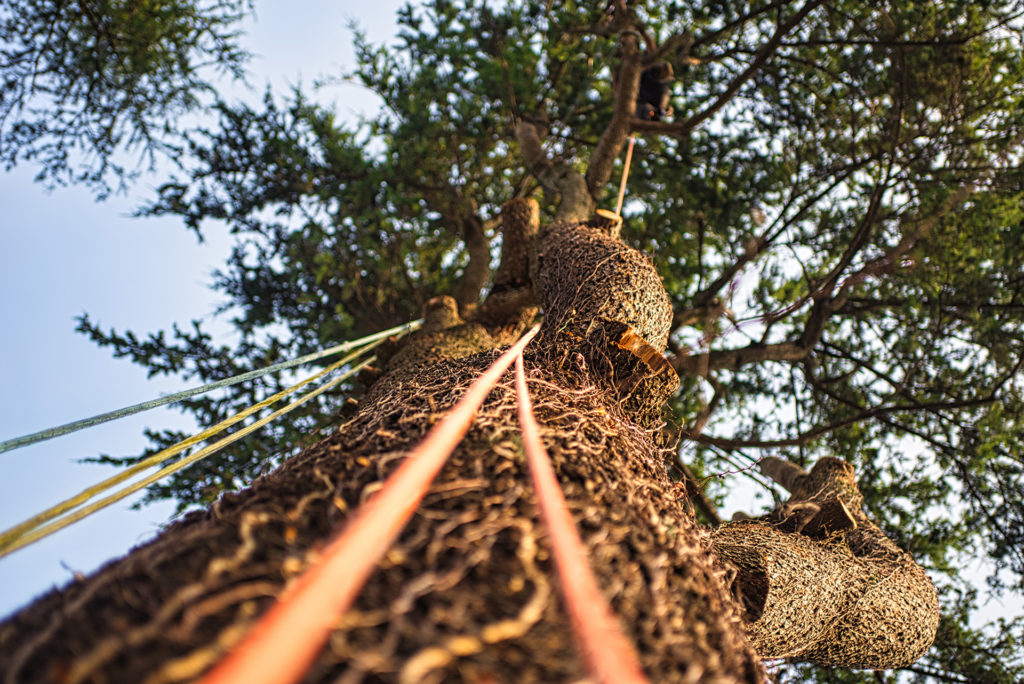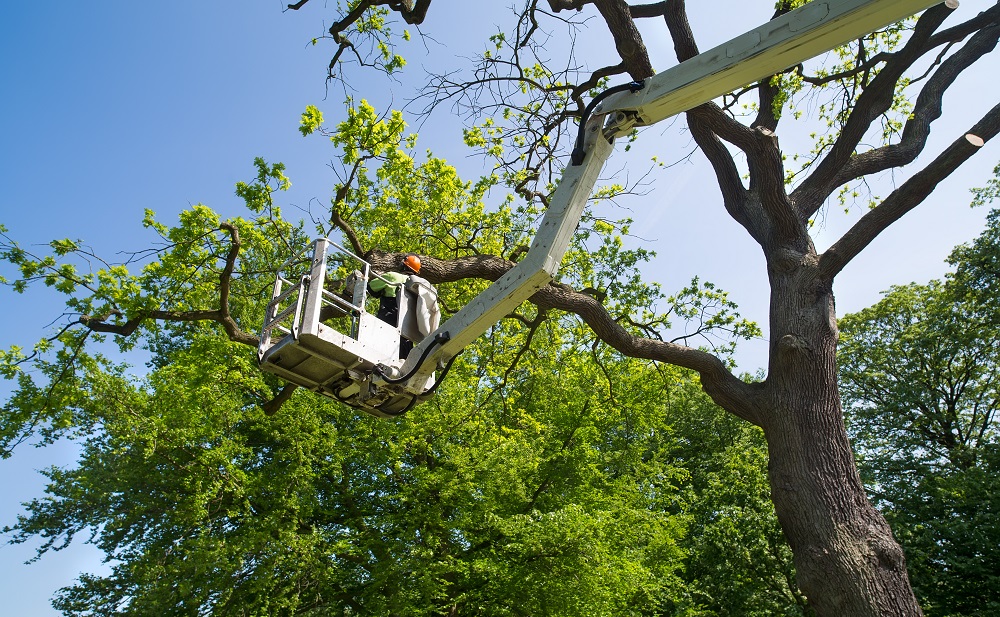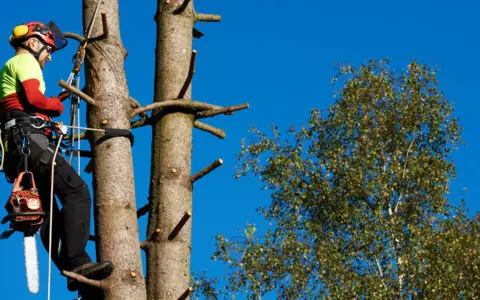When it comes to pruning or felling trees, arborists need to ensure they’re relying on the best tools and techniques for the job. Using the wrong tool or the wrong technique at the wrong time could result in disaster, or at the very least make the job more difficult and time-consuming.
That’s why modern tree climbing has come such a long way from the old days. With the addition of harnesses, pulleys, ascenders, descenders, and other tools, arborists look like they’re preparing to scale a cliff instead of a tree. These changes are for the better, however, because they ensure workers are much safer as they complete jobs.
It’s also important to deploy the ideal tree climbing technique for the job at hand, or to even abandon climbing in favor of a bucket truck when the situation calls for it. Let’s take a deeper look at modern tree climbing techniques and the benefits and drawbacks of each style.

SRS vs. MRS Arborist Climbing Techniques
The two most popular tree climbing techniques for the professional arborist are SRS and MRS, which stand for Stationary Rope System and Moving Rope System. Here is an explanation of each technique, as well as their benefits:
Moving Rope System (MRS)
This is also commonly known as a moving rope system. Start by creating a tie-in point by installing a climbing line through a Friction Saver in a tree, causing the rope to “double” over itself and giving this technique its name.
Take the terminal end of the rope and put a carabiner through it. The other end of the rope is your working end. The worker’s harness is then attached to the working end of the rope, often with a hitch cord or another device.
This hitch cord allows the climber to move up and down the rope. Then, you take the terminal end and attach it directly to the worker’s harness. This, essentially, creates an adjustable loop that allows the worker to climb up and down the tree. If you’re interested in an MRS rope kit, the RNA Zigzag Climbing Kit is a great choice.
Advantages of MRS
- The worker always has access to both ends of their climbing line, which makes it very easy to remove the rope when it’s time to clean up.
- The tie-in point makes it so that you only have to pull half of your weight when pulling on the working end of the rope.
Disadvantages of MRS
- This climbing method tends to be very slow. With MRS, you must pull two feet of rope on the working end to ascend one foot, making it a bit inefficient.
- The friction caused by a double rope system can be difficult to work with at times, especially in instances where you rely on a redirect for climbing.
Stationary Rope System (SRS)
With SRS, which is also known as stationary rope technique, the terminal end of the rope is either attached at the base of a tree, called a basal anchor, or at the top of the tree, which is called a canopy anchor. If you rely on a basal anchor, you must still run the rope through a crotch in the tree.
Instead of a rope that moves as you move, the rope is stationary and the climber moves up and down that single, stationary rope. There are many great rope kits that are perfect for SRS.
Advantages of SRS
- You ascend at a one-to-one ratio, unlike the less efficient MRS method, which proves to be much faster.
- The friction that you experience at your hitch is consistent, so even if you must use a redirect, you won’t experience any additional hardships due to friction.
Disadvantages of SRS
- You must pull your entire weight to ascend while climbing.
- You must put more thought into your setup so that, when you’re done with your climb, you can retrieve your line and get it out of the tree.
Climbing with Spikes vs. Without Spikes
Although leg spikes, also known as leg gaffs or spurs, have their uses when it comes to climbing trees, it’s important to avoid using them when pruning living trees.
Each puncture caused by a climbing spike will cause tree tissue death, though the exact amount varies from tree to tree. These wounds can heal, but large groupings of holes from spikes can do irreparable damage.
However, there are some instances when climbing with spikes is acceptable or even necessary:
- When the tree is being removed or already dead, spikes are not an issue.
- In certain circumstances where branches are too high for throwlines and bucket trucks aren’t available, climbing with spikes might be the only viable option.

When to Use Bucket Trucks
Bucket truck tree work has a variety of benefits, but many arborists may prefer to climb in most situations. Take the time to assess the specific needs of the job at hand and make a decision based on safety, efficiency, and effectiveness.
Bucket trucks can’t always reach the tops of the tallest trees, and some yards may be inaccessible to the trucks, which means climbing might be the best bet. There are some arborists who also believe that, when it comes to pruning, it’s important to be precise and delicate. For those workers, climbing might be their preference because they are able to work within the tree canopy.
However, let’s take a look at a few advantages that bucket trucks provide:
- Climbers can sometimes experience limited mobility, forcing them to make larger cuts than necessary while pruning. Bucket trucks don’t have this issue, so workers can cut exactly what is needed or preferred.
- Trees may have unseen weak spots or cavities that prove to be dangerous for climbers, which is just one reason why a bucket is often the safer option.
- Bucket trucks also tend to be much more efficient than climbing, and efficiency is always important for companies trying to fit in as many jobs as possible.
Although everyone has their own tree climbing technique preferences, one thing all arborists can agree on is the need for durable, proven, and useful climbing equipment. Trust Rock N Rescue’s extensive selection of arborist supplies to stock up for your next job.

